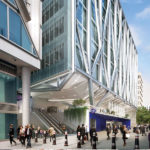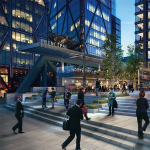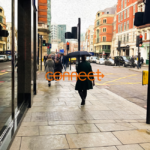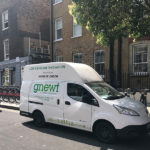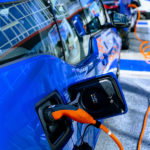In our fourth conference blog, we look into another acronym that’s has been sending ripples through the transport field – DRT. DRT stands for Demand Responsive Transport, and it’s pretty much as broad as you might think. TfL define DRT in the following way: ‘a form of on-demand passenger transport which operates in shared-ride mode and follows flexible routing and/or timetable according to passenger needs’.
In this article, we’ll explore some of the applications that might be the most commonplace in future months and years. DRT isn’t necessarily a new concept – dial-a-ride and community transport services have long been responsive to demand, but new ideas are looking to open this out to the wider public. Imagine a cross between a community transport bus and that part of the Uber app you always ignore – Uber Pool! Previously a means of accessing some of the least remote communities, this is now being bought into the mainstream.
Buses, trains and trams as we know them all operate on fixed routes which are mostly timetabled. They operate at higher frequencies during peak demand periods and may offer varying peak and off-peak fares. This is how our transport systems can be flexible to peaks and troughs of demand, but with DRT we see a reversal of the supply-based system, where transport services are fully adaptable to routing and timings as demanded by passengers.
Who’s doing what?
ArrivaClick is one of the most exciting entrants into the DRT market, offering high-quality demand-responsive minibuses within central parts of Liverpool and Sittingbourne (Kent). The consumer model is very similar to ride-hailing taxi apps with which we have all become familiar with, though the key difference here is that the ArrivaClick service is a shared service operating at a higher capacity.
We also heard from Esoterix Systems, who have made MYFIRSTMILE in Bristol and have worked towards the enhancement of fixed route bus systems by linking wider suburban and semi-urban communities to fixed bus route stops. In linking a large group of people to the existing bus network, in a flexible and demand responsive way, MYFIRSTMILE targets people who would otherwise be driving to work and providing them with a real and easy alternative, the way to achieve meaningful improvements in sustainable travel.
At the Smarter Travel LIVE Conference in Liverpool, we also heard about Transport for London’s (TfL) movement into additional trials with DRT buses after authorising the operation of Chariot in Battersea, Plumstead/Greenwich and Abbey Wood areas. This presents a huge opportunity for TfL, who can help to shape the impact that DRT buses have on London’s transport network. They will need to improve congestion and public transport connectivity, and importantly contribute to an ever-more innovative funding structure for the transport authority that is heading towards a £1billion deficit this financial year (which no doubt is driving TfL’s bus route consolidation plans).
What does this mean?
DRT has the potential to provide access to sustainable transport options to more people, providing the mass transit answer to problems posed by the meteoric rise in usage of the likes of Uber and Lyft. Their most appealing use will be linking less connected areas with public transport hubs to facilitate a modal shift away from private vehicles – the panacea for progressive transport planning. To do this effectively, they will need to be affordable, regulated and sufficiently reliable.
Something we are not hearing about much is the impact on flexible and demand-responsive vehicles on road network performance. A study by PTV Group for the International Transport Forum has shown that pick-up/drop-off activity taking place in the highway can have significant negative impacts on network performance (put simply, vehicle flow), leading to increased congestion unless dedicated drop-off bays are provided on kerbsides.
What’s Next?
Whilst DRT buses have great potential in their own right, one can’t help but feel that their integration into an integrated (dare I say Mobility as a Service-style?) application will provide the greatest benefits to sustainable travel and network capacity concerns.
Another consideration is that DRT bus operators may eventually find some routes and timings that they prefer to others, leading them to use these more frequently, or even permanently. And then we’ll be back to where we started, with the important added feature that these new routes will be significantly more evidence-based than their traditional bus route counterparts. Ultimately, the likelihood is we’ll see DRT buses operating to enhance the connectivity of existing public transport infrastructure, likely as Deviated Fixed Route Services.
